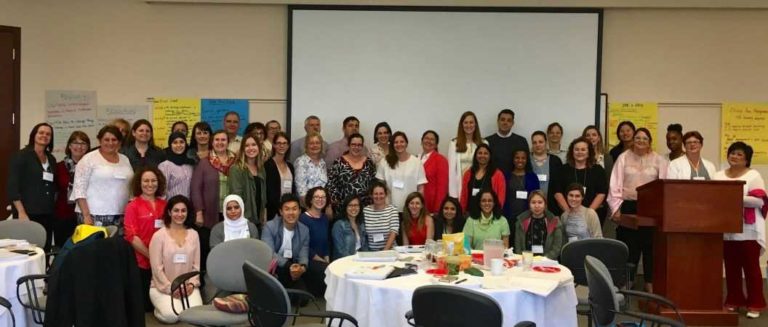
As an Associate Professor in the School of Pharmacy at Queensland University in Australia, Dr. Neil Cottrell is always looking for opportunities to prepare his students to work with different, and sometimes unfamiliar, health care disciplines. That’s why when his Faculty of Health and Behavioural Sciences offered to send Neil to Toronto this past summer to attend a program on interprofessional education, he jumped at the chance.
Educating Health Professionals in Interprofessional Care (EHPIC™) is a five-day accredited certificate program offered by the Centre for Interprofessional Education (Centre for IPE), a partnership between the University of Toronto and UHN. Now in its 14th year, EHPIC™ is designed to develop leaders in interprofessional education and care, giving them the knowledge and skills to teach both learners and colleagues how to work collaboratively and improve patient care together.
“We want to help leaders become champions in the field and truly make transformational changes in health care,” says Lynne Sinclair, Innovative Program and External Development Lead at the Centre for IPE and Co-director of EHPIC™.
In the first few days of EHPIC™, Neil found he was learning skills he hadn’t considered integrating into his teaching practice. “There’s nothing like this program in the interprofessional space in education in Australia that I’m aware of,” says Neil. “Even though I’m experienced in some areas of interprofessional education, there was an awful lot of leadership techniques I had never been exposed to before.”
While Neil was one of 22 international health care professionals who attended EHPIC™ in 2018, that number has increased from four international participants in the program the previous year. The jump in international registration has made the program faculty recognize that EHPIC™ offers more than leadership in interprofessional education and care. The program is filling professional gaps in health care across Canada and internationally.
“Professionals abroad have started learning about the Toronto model and how we craft things in the program,” says Lynne. “They’ve started investing in sending staff and faculty to EHPIC™ and learning from our Toronto team.”
Soon after its inception, the program gained momentum quickly and health care organizations became interested in training 40 or 50 of their professionals together. In addition to the five-day program in Toronto, the Centre for IPE takes a condensed version of the program on the road, in Canada and abroad, by customizing the material to different health care populations and curriculum needs.
“Because of our history and what we learned from building the program over 14 years, we became a go-to for other countries to complete the program and use our resources for their teaching purposes,” says Lynne. “We are open to sharing tools and tips that we’ve gathered over our journey.”
But the biggest strength of the program is the use of an education framework called emergent design. Before EHPIC™ begins each year, faculty meet to discuss how the program could be modified to include any new changes, studies and literature in interprofessional education and care. Throughout the program, faculty collect daily evaluations from participants, then adjust the next day’s material to ensure they are meeting participants’ needs based on feedback. If the group’s learning needs take the program in a different direction, faculty make sure they introduce new and relevant material to honour those needs.
“This year we had participants from Canada, USA, Middle East and Australia. When they had a learning requirement specific to their region, we tailored the material to make sure that they got what they needed for their work back home,” Lynne says. “When you’re trying to help leaders understand how to teach in an interprofessional environment, the program material needs to resonate with them.”
For Neil, the draw to EHPIC™ was much deeper. Part of the accreditation process for the School of Pharmacy at Queensland University is identifying opportunities for pharmacy students to work alongside and learn from other disciplines so that interprofessional practice is part of the norm.
Neil’s pharmacy students have an opportunity to do a placement in different settings, such as observing a student-led physiotherapy clinic and interviewing patients about their medication. Now, Neil feels more confident in recommending learning activities to help his students become better at working with different disciplines that may be outside their comfort zones. And in the long run, that means patients will receive better care.
“A line we heard in EHPIC™ that put a smile on our faces was ‘education is a health care intervention.’ If we can give our students the skills they need to be change agents, then we will have better outcomes for patients,” says Neil.